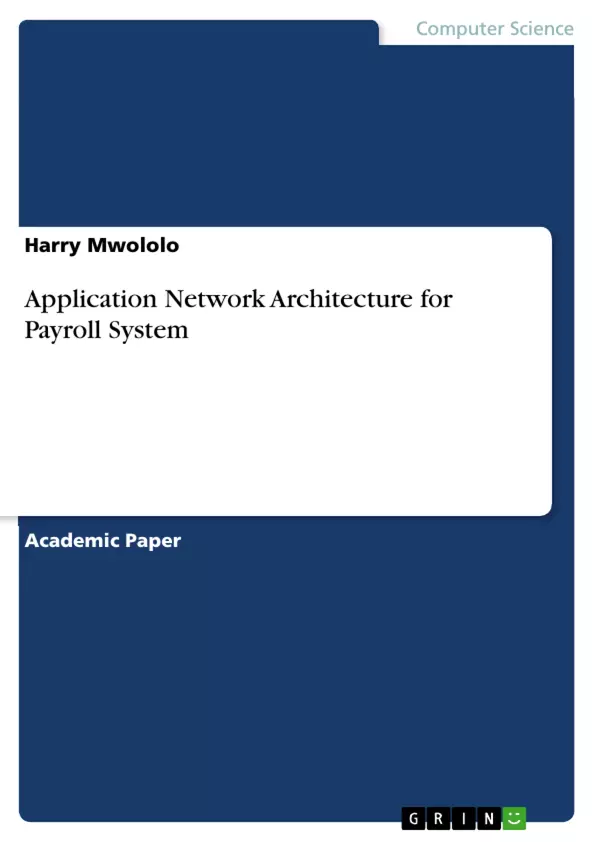As a business grows and expands its offices to various locations, it starts to hire more employees to serve from the new offices. Further business expansion means that the organization spreads their offices to different regions within the country. This paper explains how a large business organization that has spread their offices in various areas of a country can develop a payroll system that one centralized database that each payroll department links to through Wide Area Network (WAN).
Inhaltsverzeichnis (Table of Contents)
- APPLICATION NETWORK ARCHITECTURE FOR PAYROLL SYSTEM
- Client/Server Architecture for a Large Organization
- Virtual Private Network
- VPN Benefits
- Ethical and Legal Considerations
- Conclusion
Zielsetzung und Themenschwerpunkte (Objectives and Key Themes)
This paper examines the challenges of developing a robust and secure payroll system for a large business organization with dispersed offices. The paper focuses on designing an effective application network architecture using a client/server model and addressing ethical and legal considerations.
- Designing an application network architecture for a distributed payroll system.
- Implementing client/server architecture for centralized data management.
- Utilizing Virtual Private Networks (VPNs) to provide secure access to the payroll system.
- Addressing ethical and legal considerations related to data security and privacy.
- Exploring the impact of the new system on organizational culture and employee relations.
Zusammenfassung der Kapitel (Chapter Summaries)
- The paper begins by outlining the need for a centralized payroll system for a large organization with multiple locations. The author proposes the use of client/server architecture as the most appropriate approach, emphasizing the importance of data centralization and the role of the IT department in ensuring system stability.
- The paper then delves into the use of Virtual Private Networks (VPNs) as a secure means for payroll departments to access the centralized system from remote locations. The advantages of VPNs, including enhanced security, privacy, and the ability to link geographically separated offices, are discussed.
- The author addresses ethical and legal considerations related to data security and privacy, emphasizing the importance of data backup, access control, and compliance with relevant laws. The potential impact of the new system on organizational culture and employee relations is also explored, highlighting issues such as changes in payment periods and potential job displacement.
Schlüsselwörter (Keywords)
The paper focuses on the application network architecture, client/server architecture, Virtual Private Networks (VPNs), data security, privacy, ethical considerations, legal compliance, and organizational culture.
- Quote paper
- Harry Mwololo (Author), 2017, Application Network Architecture for Payroll System, Munich, GRIN Verlag, https://www.grin.com/document/384399



